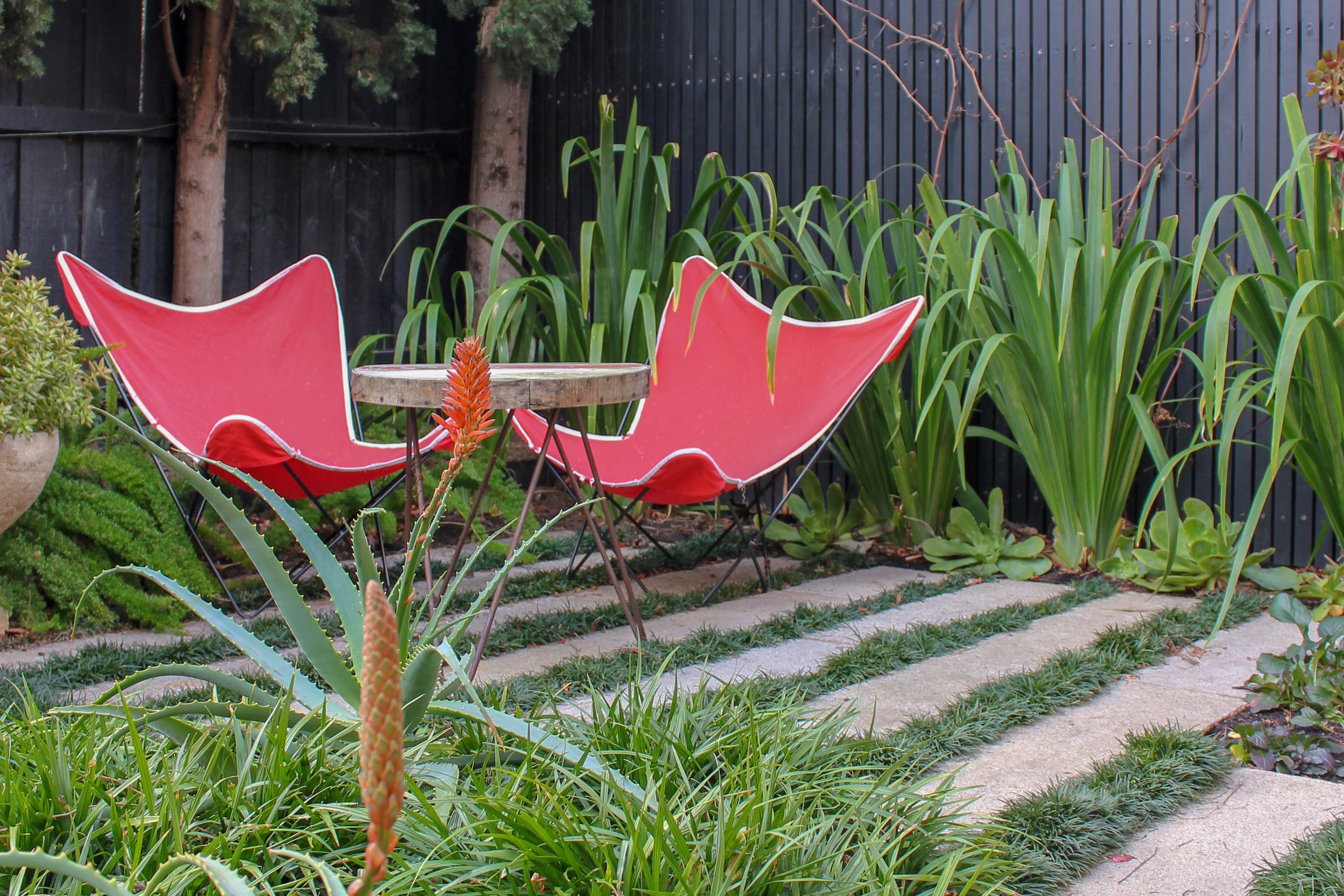Rethinking the winter garden

Banish the idea that winter gardens are dull. This July, OGV had the pleasure of opening a beautifully crafted, light and inviting inner city garden designed by landscape architect Andrew Laidlaw.
In front of a crackling outdoor fire, Andrew shared his tips for designing a garden that shines in winter – explaining to visitors some of the key plants he has used to make this compact Toorak garden feel so inviting.
Here, clever planting design has made the garden a true extension of indoor spaces, maximising winter light and drawing you through the spaces to enjoy some beautiful flowering plants.

Andrew Laidlaw shares tips for designing a garden that shines in winter.
“A really important aspect of living in Melbourne at this time of year is being able to capture winter light” Andrew says. “You want to allow more light into the garden, that will in turn flow through to the living spaces inside the house.”
In this garden, a number of existing pencil pines on the boundary were removed to allow the sun to filter through. Small deciduous trees such as Japanese maples and Cercis ‘Forest Pansy’ allow light to penetrate between bare winter branches, yet the garden is still primarily layered with evergreen plants.

Deciduous Japanese maples allow winter light in, while evergreen foliage of Mahonia & Asparagus provide permanent structure.
“If you fill your garden up with too much deciduous material, it increases that empty, vacant feeling. I like to wrap the garden in primarily evergreen foliage and this becomes the permanent structure of the garden,” Andrew says.
“To feel lush, you really need to have that evergreen mass, together with winter-flowering highlight plants.”
One of Andrew’s favourite highlight plants is the Yulan Magnolia (Magnolia denudata) – a beautiful early flowering deciduous magnolia with pure creamy-white flowers. Daphne odora is another favourite, which he says: “just floods the garden with perfume”.

The creamy-white flowers of Magnolia denudata.
Aloes have been used around the pond – emerging between finer, strappy foliage. Like the red hot pokers (Kniphophia sp.) used in the front garden, the aloes provide “a real blast of vibrant winter colour – and they act almost like a ‘torch’ in the winter garden”.

Winter flowering aloes.
Mahonia bealei is another surprising winter flowering plant – it has interesting foliage that can be quite striking against a fence line, can handle dry shade and has cheery yellow sprays of flowers.
Garden visitors were in love with a stunning form of hellebore – ‘Anna’s Red’ – used in a massed display in the rear courtyard. Its delicious plum-toned flowers are held above textured foliage and it makes a lovely cut flower according to Andrew.

Helleborus 'Anna's Red'
Pots are another great tool for creating seasonal interest in winter. In this garden – bright red geraniums provide colour and warmth and potted succulents such as the oak-leafed Kalanchoe beharensis bring wonderful form and texture to the foreground.
Andrew’s approach to evergreen shrubs is to always keep things interesting.
“While I’m using lots of evergreen plants in the garden I’m always focussing on their relationship to each other and their form, colour and texture. Layering plants with different shades of green gives you subtle nuances in tone, so the winter garden never looks boring.”

The Toorak courtyard garden designed by Andrew Laidlaw.
Some of the great foliage combinations in this garden include the ‘dramatic’ rosettes of Aeonium arborescens paired with Palm Grass (Molineria capitulata), which has bold pleated strappy foliage. The fine-leafed form of Choisya ‘Aztec Pearl’ contrasts well with the large leaves of Bartlettina sordida (previously Eupatorium) – a blousy shrub that attracted many comments and queries at the open garden.
 Choisya 'Aztec Pearl' paired with Aeonium arborescens.
Choisya 'Aztec Pearl' paired with Aeonium arborescens.
“Another common plant that I love is Nandina domestica,” Andrew says. “It’s more upright, it doesn’t billow out, it’s tough, has a lovely fine foliage and a red winter berry.”

Nandina domestica combined with Molineria and Aeonium.
Andrew also advises selecting the right plants for different microclimates within the garden.
A case in point – the grass-like Lomandra ‘Tanika’ has been selected here to cope with the root competition and dry conditions under pencil pines on the boundary.
“Some people think of it as a freeway plant but it’s tough and has great textural contrast when you combine it with the feathery foliage of a plant like Asparagus densiflorus ‘Meyersii’.

Lomandra 'Tanika' - more than just a 'freeway' plant.

Kniphophia are like 'torches' in the winter garden.
“Choose the right plants for the conditions and they will perform better for you in the long run, with far less intervention.”

Alpinias envelop with lush foliage.
Andrew Laidlaw is principal of Laidlaw & Laidlaw Design and is the Landscape Architect at the Royal Botanic Gardens Melbourne. He is a board member of Global Gardens of Peace, an Australian charity that aims to plan, design and deliver gardens to support vulnerable communities around the world.
